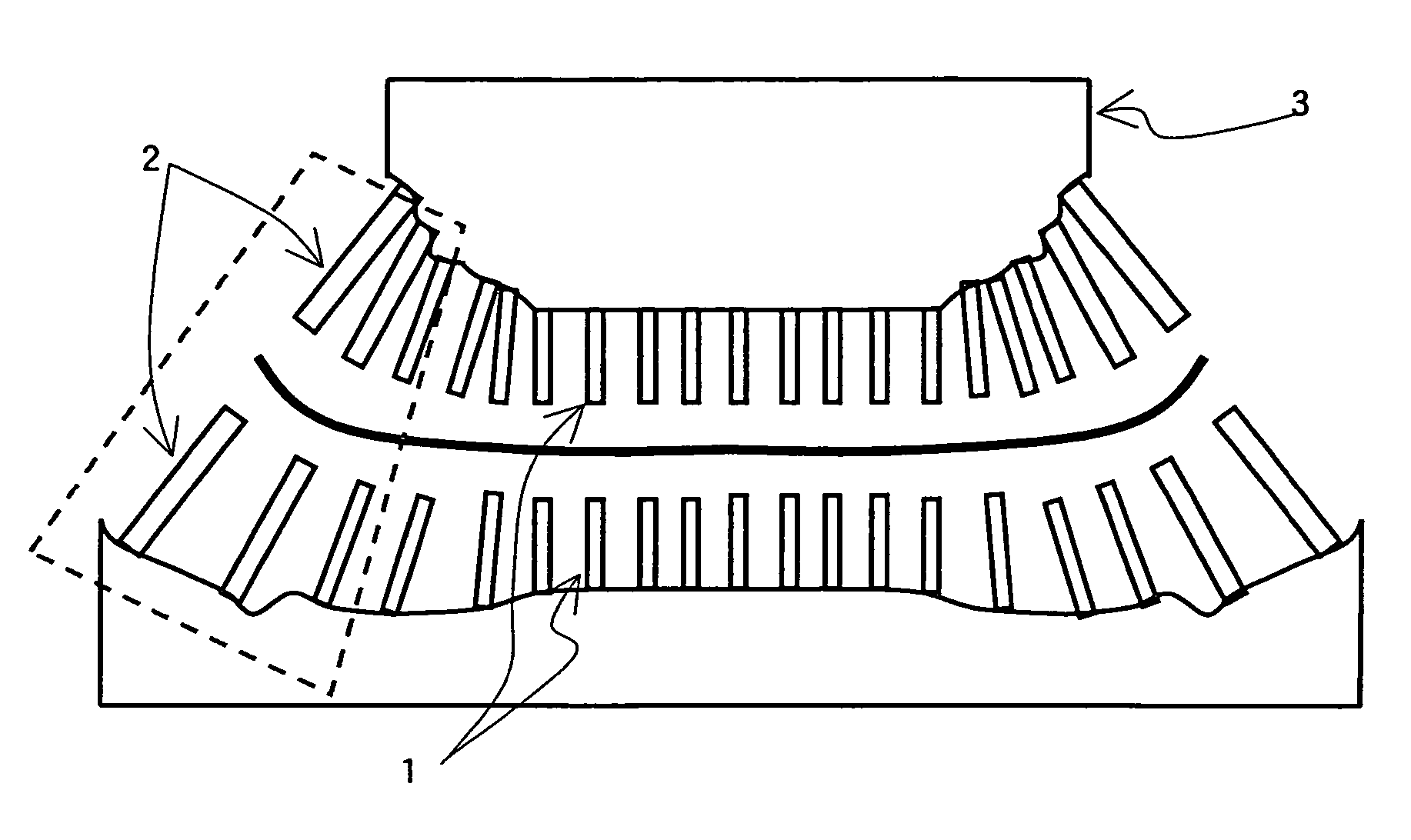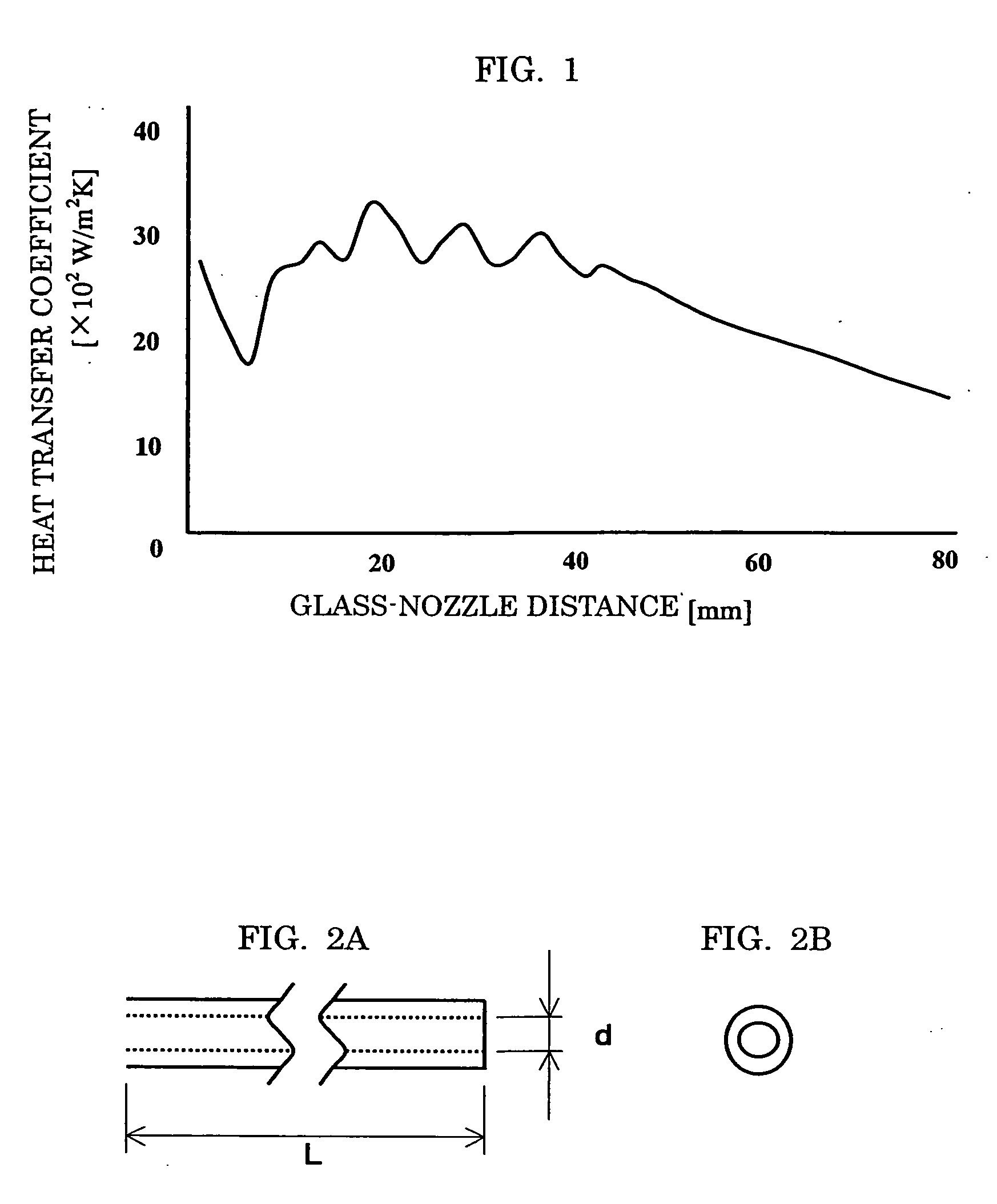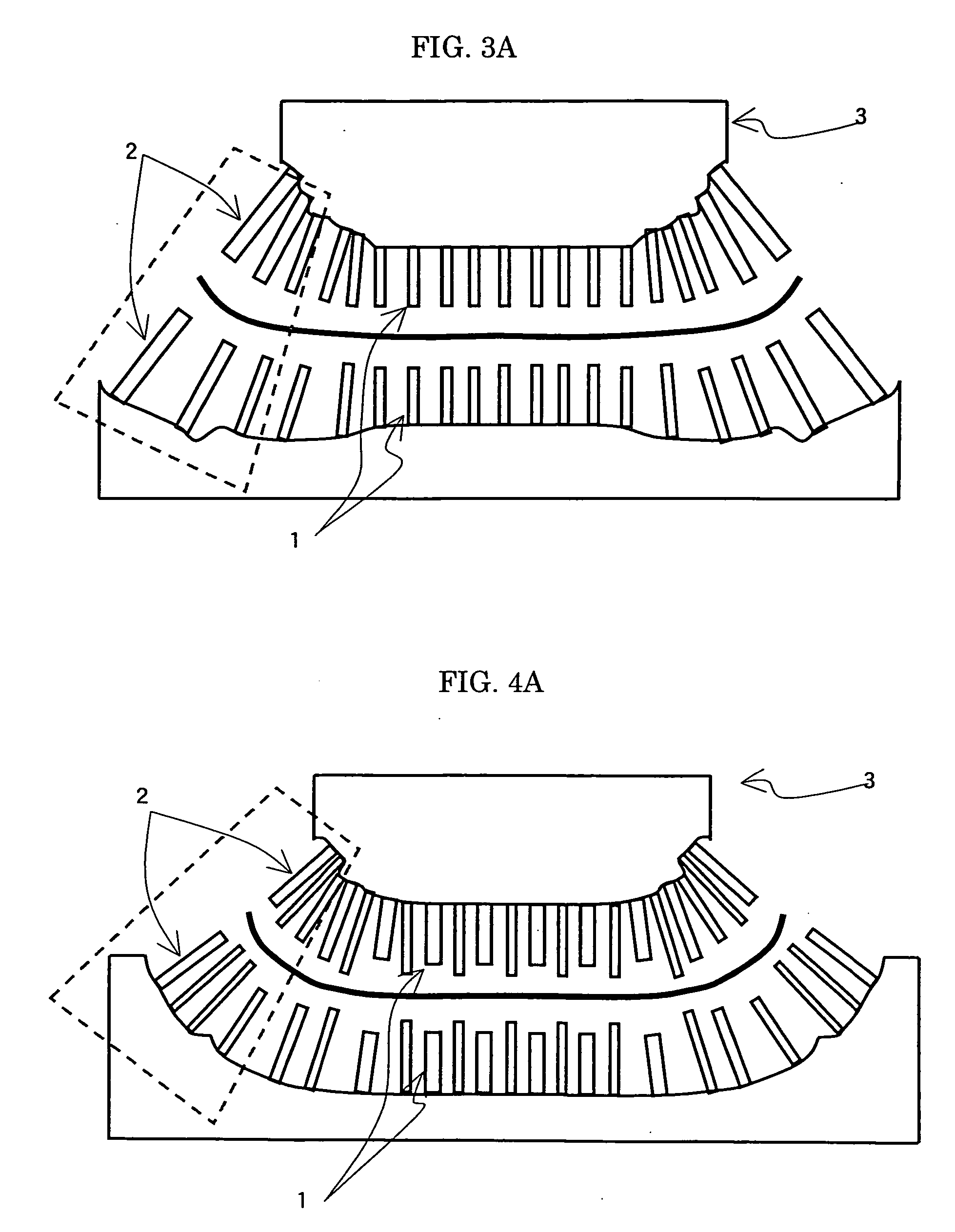Thermally tempered glass, and method and apparatus for manufacturing the glass
- Summary
- Abstract
- Description
- Claims
- Application Information
AI Technical Summary
Benefits of technology
Problems solved by technology
Method used
Image
Examples
example 1
[0053] There was prepared a curved 2.3 mm thick glass having dimensions of 490×820 (mm). As shown in FIGS. 3A and 3B, a thermally tempered glass was produced by using a nozzle 1 group of a shape shown in FIGS. 2A and 2B having an inner diameter d of 3 mm and a length L of 100 mm for a relatively flat region forming portion and by using a nozzle 2 group of a shape shown in FIGS. 2A and 2B having an inner diameter d of 4 mm and a length L of 100-130 mm for a curved region forming portion (curved surface radius: ˜500 mm). Each nozzle communicates with a high-pressure air supply apparatus through a blast head 3. The distance between glass and nozzle upon this was based on about 30 mm, and the chamber pressure was adjusted to 0.4 mm.
[0054] As a result of an air-quench tempering treatment under this quenching condition, the fragment density (the number / 25 cm2) at the relatively flat region forming portion was about 100, and that even at the curved region forming portion was about 60. Thi...
example 2
[0055] There was prepared a curved 2.3 mm thick glass having dimensions of 490×820 (mm). A thermally tempered glass was produced by using a nozzle group having an inner diameter of 3 mm and a length of 100 mm for a relatively flat region forming portion and by using a nozzle group having an inner diameter of 4 mm and a length of 150-200 mm for a curved region forming portion (curved surface radius: ˜250 mm). The distance between glass and nozzle upon this was based on about 25 mm, and the chamber pressure was adjusted to 0.5 MPa.
[0056] As a result of an air-quench tempering treatment under this quenching condition, the fragment density (the number / 25 cm2) at the relatively flat region forming portion was about 350, and that even at the curved region forming portion was about 250. This result meets the specification as a tempered glass. When the surface compressive stress of this tempered glass was measured, it was 135 MPa at a place where the maximum value was obtained and 120 MPa ...
example 3
[0057] There was prepared a curved 2.3 mm thick glass having dimensions of 540×1150 (mm). A thermally tempered glass was produced by using a nozzle group having an inner diameter of 2.5 mm and a length of 100 mm for a relatively flat region forming portion, by using a nozzle group having an inner diameter 3 mm and a length of 150-200 mm for a curved region forming portion A (curved surface radius: ˜500 mm), and by using a nozzle group having an inner diameter of 4 mm and a length of 150-200 mm for a curved region forming portion B (curved surface radius: ˜250 mm). The distance between glass and nozzle upon this was based on about 25 mm, and the chamber pressure was adjusted to 0.55 MPa.
[0058] As a result of an air-quench tempering treatment under this quenching condition, the fragment density (the number / 25 cm2) at the relatively flat region forming portion was about 150, and that even at the curved region forming portion was about 80. This result meets the specification as a tempe...
PUM
| Property | Measurement | Unit |
|---|---|---|
| Length | aaaaa | aaaaa |
| Pressure | aaaaa | aaaaa |
| Pressure | aaaaa | aaaaa |
Abstract
Description
Claims
Application Information
 Login to View More
Login to View More - R&D
- Intellectual Property
- Life Sciences
- Materials
- Tech Scout
- Unparalleled Data Quality
- Higher Quality Content
- 60% Fewer Hallucinations
Browse by: Latest US Patents, China's latest patents, Technical Efficacy Thesaurus, Application Domain, Technology Topic, Popular Technical Reports.
© 2025 PatSnap. All rights reserved.Legal|Privacy policy|Modern Slavery Act Transparency Statement|Sitemap|About US| Contact US: help@patsnap.com



